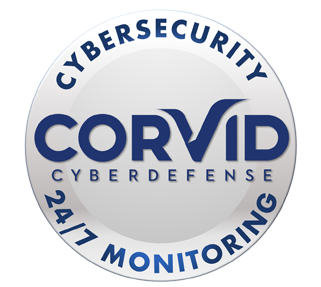 The middle of the year is a great time to assess financial progress, adjust goals, and address any changes that may impact your overall plan. A mid-year financial checkup provides an opportunity to review income, spending, savings, investments, and tax planning while there is still time to make adjustments before year-end.
The middle of the year is a great time to assess financial progress, adjust goals, and address any changes that may impact your overall plan. A mid-year financial checkup provides an opportunity to review income, spending, savings, investments, and tax planning while there is still time to make adjustments before year-end.
By taking a proactive approach, you can evaluate whether you are on track with your financial goals and identify areas for improvement.
Review Your Budget and Spending Habits
A good starting point for a mid-year financial checkup is reviewing income and expenses. Analyzing bank statements, credit card transactions, and budgeting tools can provide insight into spending patterns and highlight areas where adjustments may be needed.
Some key questions to consider:
- Have there been any significant changes in income or expenses?
- Are spending habits aligned with financial goals?
- Is there room to adjust discretionary expenses to support long-term objectives?
If your expenses have increased unexpectedly, it may be helpful to look for opportunities to cut back in non-essential areas. On the other hand, if your income has risen, directing extra funds toward savings, debt repayment, or investments can help strengthen your financial stability.
Assess Savings and Emergency Funds
Building and maintaining savings is an important part of financial planning. A mid-year review is a good time to check progress toward savings goals, whether for an emergency fund [1], a home purchase, education, or other financial priorities.
Consider these factors when evaluating savings:
- Is the emergency fund sufficient to cover three to six months’ worth of essential expenses?
- Has progress been made toward savings goals set at the beginning of the year?
- Are contributions to savings accounts consistent and aligned with long-term needs?
- If your savings goals are off track, adjusting contributions for the remainder of the year can help close any gaps.
Evaluate Debt and Repayment Strategies
Debt management plays a significant role in financial health. Reviewing outstanding balances, interest rates, and repayment strategies mid-year can help keep debt under control.
Key steps in assessing debt:
- Review balances on credit cards, loans, and other obligations.
- Check interest rates and consider whether refinancing or consolidation might help reduce costs.
- Evaluate progress on debt repayment goals and make adjustments if necessary.
If you are carrying high-interest debt, focusing on reducing those balances may help free up resources for other financial priorities.
Check Investment and Retirement Contributions
The middle of the year is an ideal time to assess investment performance and retirement savings contributions. Market fluctuations, economic conditions, and personal financial goals can all impact investment strategies.
Consider these factors when reviewing investments:
Are investment allocations aligned with financial goals and risk tolerance[2]?
- Have market conditions or personal circumstances changed, requiring portfolio adjustments?
- Are contributions to retirement accounts such as 401(k)s or IRAs on track with annual targets?
If you are contributing to employer-sponsored retirement plans, reviewing contribution limits and employer match policies can help determine whether you need to make any adjustments.
Review Tax Withholding and Deductions
Tax planning is often overlooked until the end of the year, but a mid-year checkup can help avoid surprises when filing your tax returns. Checking tax withholding amounts and estimated tax payments can help prevent underpayment penalties or unexpected liabilities.
Key areas to assess:
- Have there been any major life changes (marriage, a new child, a job change) that could affect tax liability?
- Is the current withholding amount appropriate based on income and deductions?
- Are there tax deductions or credits that could be optimized before the end of the year?
Adjusting withholding or estimated payments now can help prevent last-minute tax challenges.
Revisit Financial Goals
A mid-year review provides an opportunity to reflect on financial goals set at the beginning of the year. Priorities may shift due to changes in income, expenses, or personal circumstances, making it important to reassess and adjust accordingly.
Some questions to consider:
- Have any financial goals changed since the start of the year?
- Is progress on track, or do adjustments need to be made?
- Are new goals emerging that should be factored into the financial plan?
Updating goals based on your current financial standing can help maintain focus and direction.
Review Insurance Coverage
Insurance plays a role in financial planning by helping you manage potential risks. Halfway through the year is a good time to review coverage and determine whether any adjustments are necessary.
Areas to review:
- Health insurance: Have there been any medical expenses or life changes that may impact coverage needs?
- Home and auto insurance: Are coverage limits appropriate given any changes in assets or living situations?
- Life and disability insurance: Do current policies align with financial obligations and family needs?
Adjusting coverage based on life events and financial changes can help maintain appropriate protection.
Plan for the Second Half of the Year
Once the mid-year review is complete, the next step is setting priorities for the remainder of the year. Creating an action plan based on how the first half of the year has gone can help you keep your financial goals on track.
Key steps for moving forward:
- Make necessary adjustments to savings, spending, and investment strategies.
- Address any areas that need improvement, such as debt reduction or tax planning.
- Set specific financial targets for the next six months.
Regular financial check-ins throughout the year can help you see where you might need to make changes moving forward.
Stay on Track with a Mid-Year Check-in
A mid-year financial checkup offers a chance to assess progress, adjust strategies, and stay on track with financial goals. By reviewing your income, spending, savings, debt, investments, taxes, and insurance, you can make informed decisions for the remainder of the year. Taking time to evaluate and adjust financial plans now can help create a stronger foundation moving forward.
Sources:
- [1]https://www.nerdwallet.com/article/banking/emergency-fund-why-it-matters
- [2] https://www.investopedia.com/terms/r/risktolerance.asp























 Megan Jones joined the ILG Financial team in 2020 as marketing director. Megan and her husband live in Fredericksburg, VA with their German Short Haired Pointer, Gus. Megan is a graduate of Longwood University and holds a degree in communications. Megan is the oldest of Dave Lopez’s three children and not only enjoys working alongside her father, but also with her cousin, Chase, who joined the ILG Financial team in 2020 as an advisor. Megan is also a fully licensed Life, Health, and Annuity agent. When not at work, Megan enjoys sitting on the back porch with family and friends enjoying food and music.
Megan Jones joined the ILG Financial team in 2020 as marketing director. Megan and her husband live in Fredericksburg, VA with their German Short Haired Pointer, Gus. Megan is a graduate of Longwood University and holds a degree in communications. Megan is the oldest of Dave Lopez’s three children and not only enjoys working alongside her father, but also with her cousin, Chase, who joined the ILG Financial team in 2020 as an advisor. Megan is also a fully licensed Life, Health, and Annuity agent. When not at work, Megan enjoys sitting on the back porch with family and friends enjoying food and music. Chase Lopez joined the ILG Financial team in 2020 as an advisor. Chase is a 2016 James Madison University graduate with a degree in management. Chase has been trained under the tutelage of Dave Lopez, who is not only the founder and managing member of ILG Financial, but also is Chase’s uncle and godfather. He also enjoys working alongside his cousin, Megan, who is Dave’s daughter.
Chase Lopez joined the ILG Financial team in 2020 as an advisor. Chase is a 2016 James Madison University graduate with a degree in management. Chase has been trained under the tutelage of Dave Lopez, who is not only the founder and managing member of ILG Financial, but also is Chase’s uncle and godfather. He also enjoys working alongside his cousin, Megan, who is Dave’s daughter. Amy Anderson joined the ILG Financial team in 2023 as the client relations coordinator. Her responsibilities include scheduling of appointments, annual check-up notifications, and annuity and required minimum distribution assistance. She is a graduate of Harding University with a degree in Computer Information Systems. Amy and her husband have two children and she enjoys reading, crocheting, music and spending time with her family.
Amy Anderson joined the ILG Financial team in 2023 as the client relations coordinator. Her responsibilities include scheduling of appointments, annual check-up notifications, and annuity and required minimum distribution assistance. She is a graduate of Harding University with a degree in Computer Information Systems. Amy and her husband have two children and she enjoys reading, crocheting, music and spending time with her family. Jessica Carson joined the ILG Financial team in 2018 as an agent. Jessica and her husband have four children, two dogs, 3 barn cats, 5 chickens, and three parakeets. She indeed loves her children and pets! When not at work, Jessica enjoys playing the piano and cello as well as traveling and spending time outside with her family, hiking, fishing, and boating.
Jessica Carson joined the ILG Financial team in 2018 as an agent. Jessica and her husband have four children, two dogs, 3 barn cats, 5 chickens, and three parakeets. She indeed loves her children and pets! When not at work, Jessica enjoys playing the piano and cello as well as traveling and spending time outside with her family, hiking, fishing, and boating. Terri Center joined the ILG Financial team in 2019 as client services manager. She handles client records, application processing, and gathering information to provide a professional and friendly experience with all of our clients. Terri is a graduate of Oakland University. She is married and has two children. She enjoys hiking, family time, and puzzle challenging video games. She also likes to share her creativity in her canvas paintings and sewing projects.
Terri Center joined the ILG Financial team in 2019 as client services manager. She handles client records, application processing, and gathering information to provide a professional and friendly experience with all of our clients. Terri is a graduate of Oakland University. She is married and has two children. She enjoys hiking, family time, and puzzle challenging video games. She also likes to share her creativity in her canvas paintings and sewing projects.